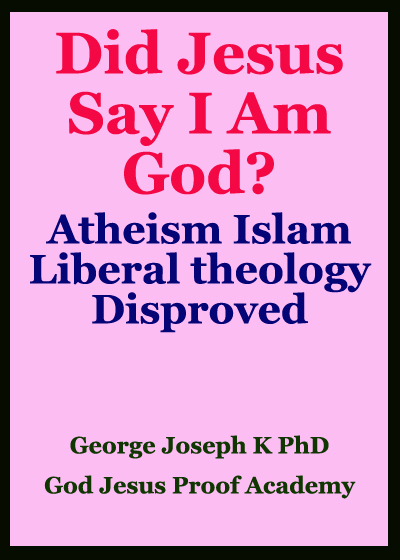
FORMAL ARGUMENT
Logic attempts to establish the laws of argumentation. The formal argument is a set of premises or propositions which provide reason for the conclusion or the belief. In a formal argument structure is given priority over content. A valid argument must contain at least two or more premises, and the conclusion must follow from the premises.
Formal syllogism has only three propositions ( two premises and a conclusion). In the formal arguments the concern of the logician is the structure of the argument, not content. From the structural point of view the argument is called syllogism: It has three terms : Major term appears in the major premise, and is the predicate of the conclusion. Minor term which appears in the minor premise, and is the subject of the conclusion. The term which does not appear in the conclusion, but is shared by both the premises is called middle term.
E.g.
Major premise: All men (Middle term) are mortal (Major term)
Minor premise: Raju (Minor term) is a man (Middle term)
Conclusion: Raju (Minor term) is mortal (Major term)
RULES OF CATEGORICAL SYLLOGISM
The rules are to make valid syllogism. But validity does not always guarantee truth.
1. There must be three and only three terms. E.g. My hand is touching the table. The table is touching the ground. Hence My hand is touching the ground. This syllogism uses four terms instead of the permitted three. It is the fallacy of logical quadruped.
2. Middle term must be distributed at least once. If not the mistake is called the fallacy of undistributed middle. E.g. All RC members are baptized. All CSI members are baptized. Hence All CSI members are RC members? E.g. All elephants have ears. My brother has ears. My brother is an elephant. This formal fallacy is called the fallacy of undistributed middle.
3. Terms distributed in the conclusion must be distributed in the premises also. E.g. All Jews are vegetarians (undistributed). No Hindu is a Jew. Hence no Hindu is a vegetarian (distributed).
4. The conclusion always follows the weaker premise. If a premise is particular, conclusion must be particular. If a premise is negative, conclusion must be negative. E.g. No murderer can enter into heaven (Universal /negative). Some men are murderers (particular/affirmative). Hence some men cannot enter into heaven. (Conclusion must be particular negative).
5. No conclusion follows from two negative premises. E.g. No men are angels. No angels are animals. ???
6. No negative conclusion follows from two affirmative premises. E.g. All members of the Trinity are fully God. Some members of the Trinity take orders from God the Father (Jn 16:5-7). Hence not all members of the Trinity are fully God (false). (It should be ‘some who take orders from the Father are fully God’).
SOME DEFINITIONS
Terms : The objects to which the term or name refer to is denotation (extension) of the name. The attributes to which the name refer to is the connotation (intension) of the name.
Definition : Definition is the analysis of the connotation of the term. Rules : It must state the essential attributes of the class denoted by the term defined. It must not be too wide or too narrow. It must not be expressed in obscure, figurative or ambiguous language. It must not use the term to be defined or any synonym of it. It must not be negative when it can be affirmative.
Division: Division is the analysis of the denotation of the term, ie, of the genus to which it belongs. Rules: In dividing a genus, the basis of division or fundamentum divisions must be a quality common to the whole extent of the genus, and the species must be distinguished according to the different modifications of this quality which they possess. Each act of division must have only one basis. This secures that the species shall be mutually exclusive or else they will overlap. The constituent species must be together equal to genus.
Judgment: Judgment is a mental act of assertion, affirmative or negative. It is a unit of thought.
CONSTRUCTING AN ADEQUATE TEST FOR TRUTH
Combinationalism (Systematic consistency). This method combines two or more of the inadequate tests. The final test of systematic consistency will be based on logical consistency (negative test - A truth claim is said to be consistent when it does not violate the laws of logic. A statement could be formally valid, but materially invalid); empirical adequacy (positive test - compatibility with day to day facts of life) and experiential relevance. This three-fold test must be strengthened by incorporating the unaffirmability (test for falsity) and undeniability (test for truth) tests.
Unaffirmability or Unjustifiability : eg. ‘It is meaningless to speak anything’, ‘ you should never use terms should and never’ are unjustifiable statements. Agnosticism, skepticism and relativism are all unaffirmable or unjustifiable arguments and hence are wrong.
Undeniability or Inescapability : The individual existence is inescapable or undeniable. That which is inescapable or undeniable is true. (Pantheists want to deny the existence of the individuals. To them only the cosmic self or the brahman exists. But the very denial of their existence is itself the evidence of their existence. The law of karma and the doctrine of caste operate on an individual basis. Pantheists have no definition for evil and sin. They consider these as illusions. But if that be so the doctrine of reincarnation and karma cannot be meaningfully explained. Because the law of karma operates in response to evil deeds).
This method of qualified systematic consistency must be able to give truthful and consistent answers to the questions regarding man’s origin, condition, salvation and destiny. This will cover the areas of God (theology), reality (metaphysics), knowledge (epistemology), morality (ethics) and mankind (anthropology). Hence any justifiable truth claim must be reliable (based on inescapable reasoning), valid (avoiding logical contradictions), unity (having relatedness), compatibility (theories must fit facts), universal (wide range of applicability), and plausible (capable of explaining observable facts of life).



